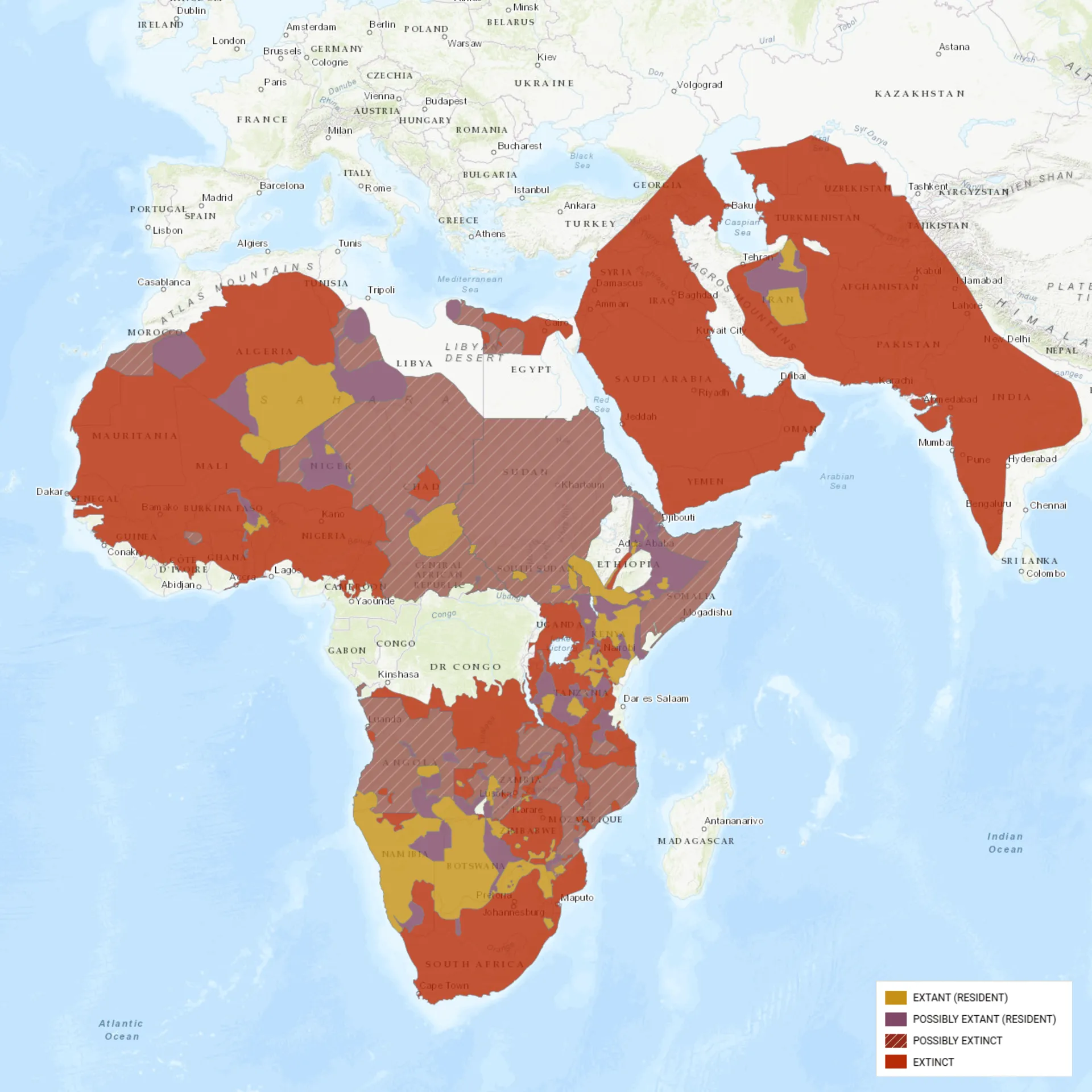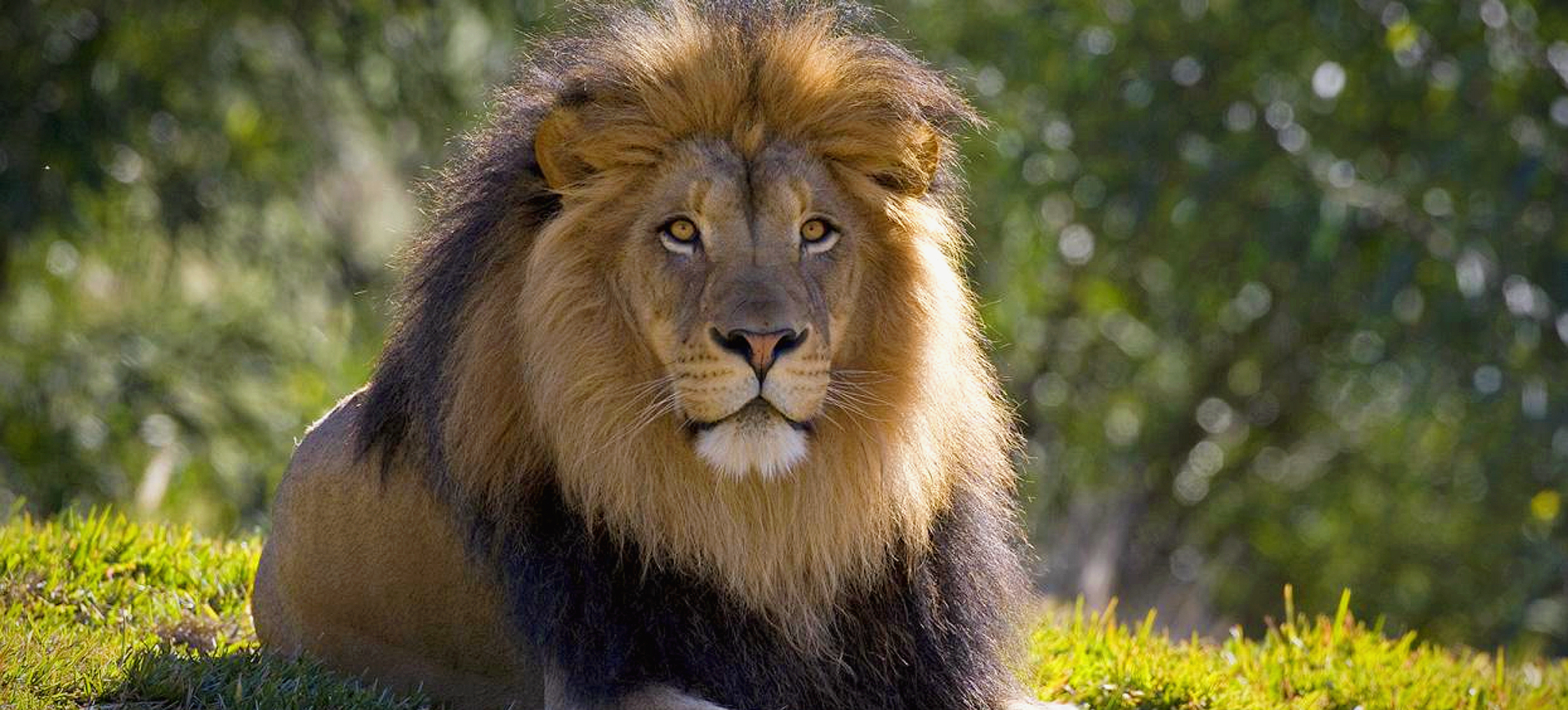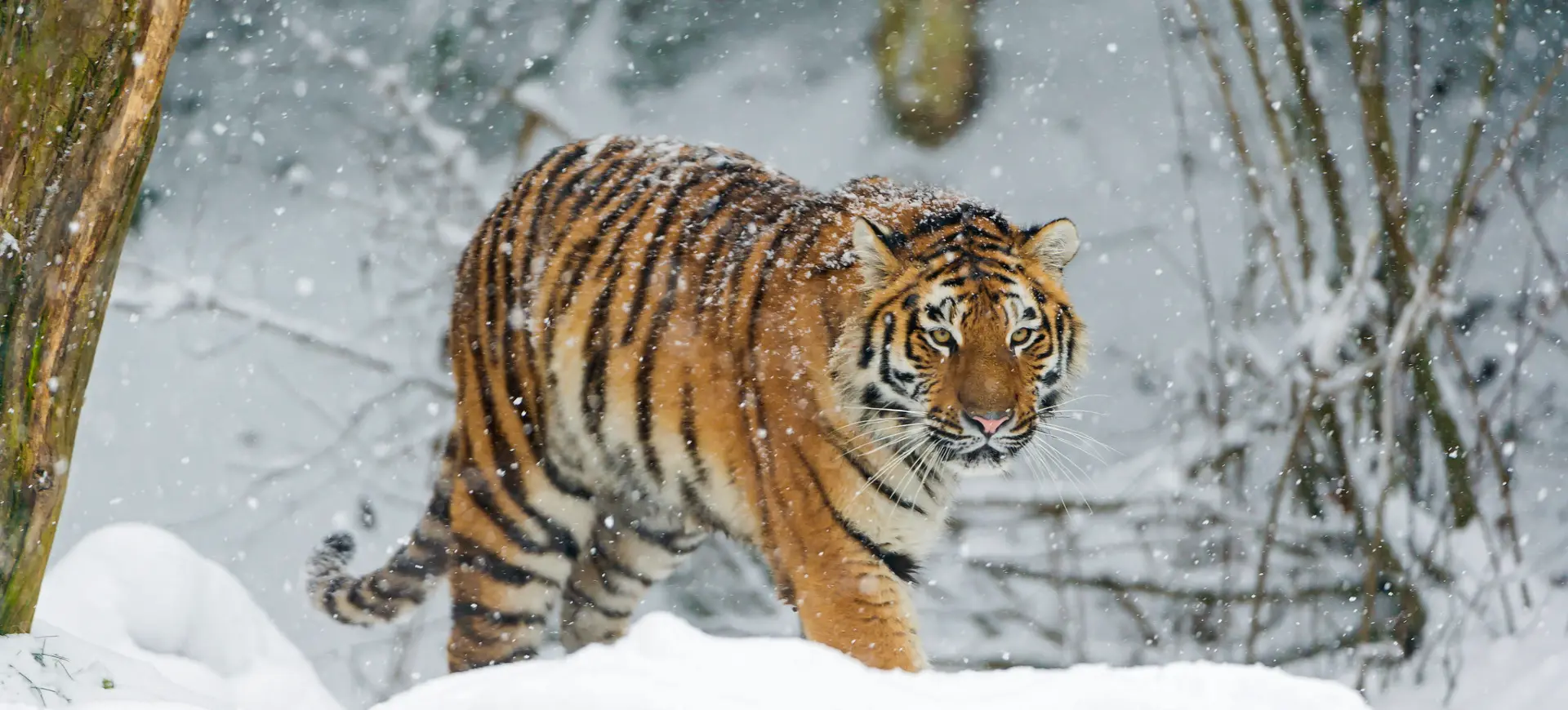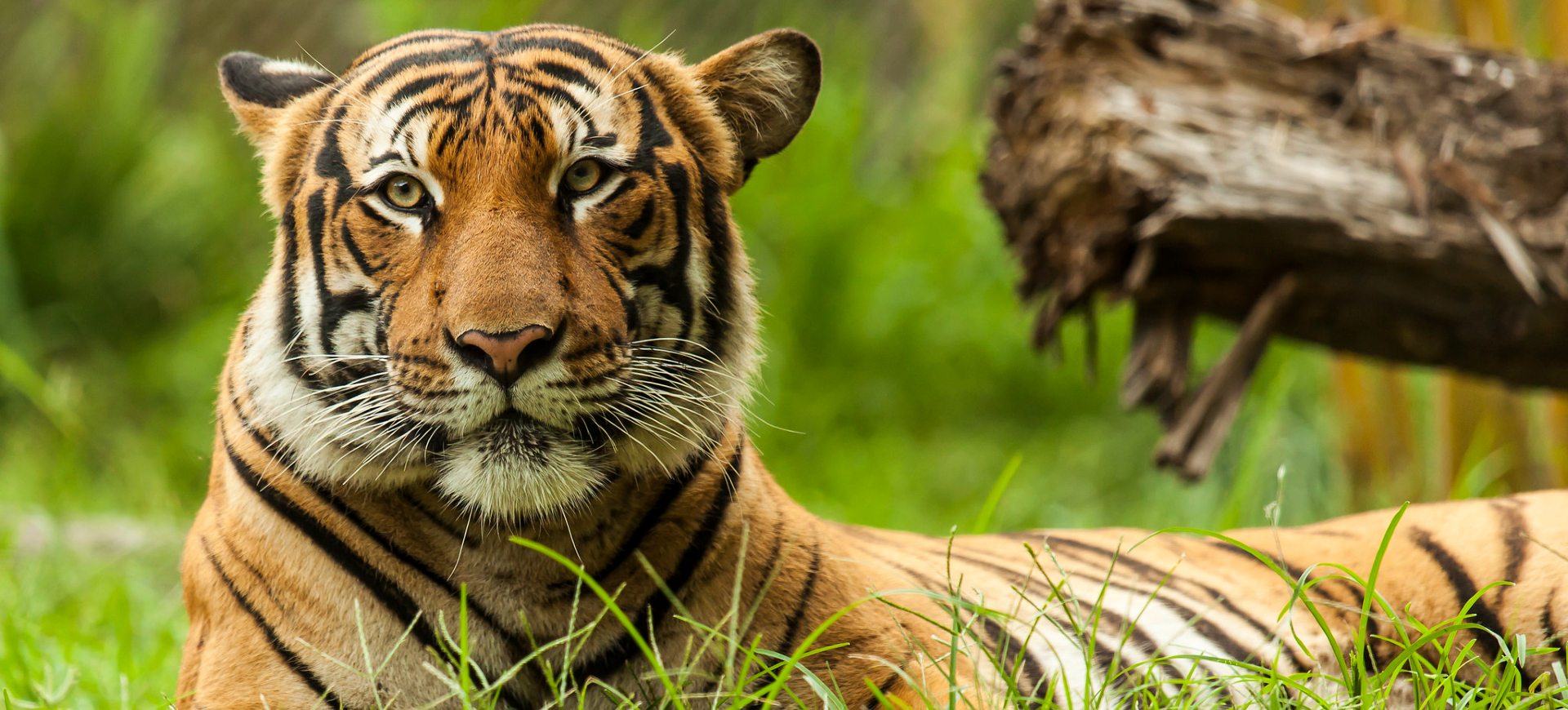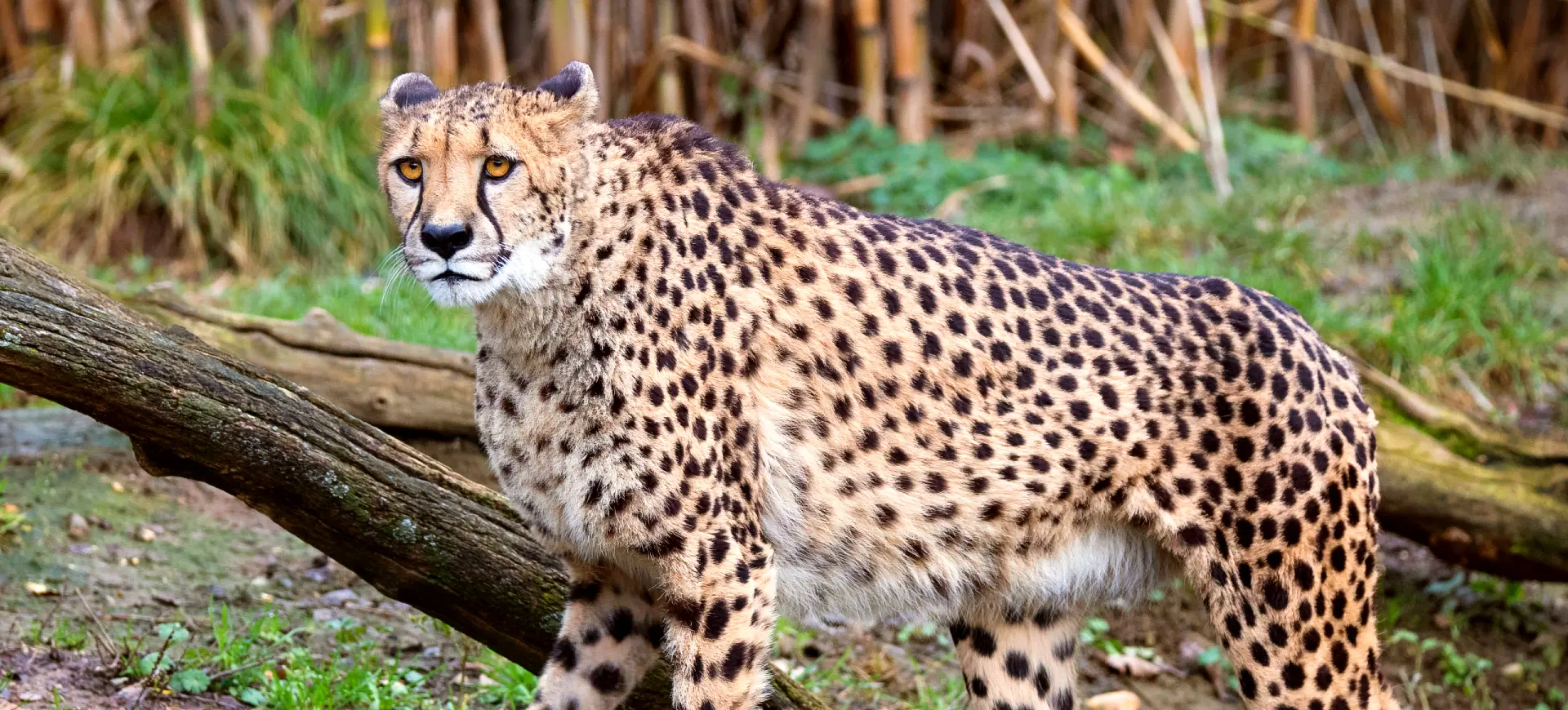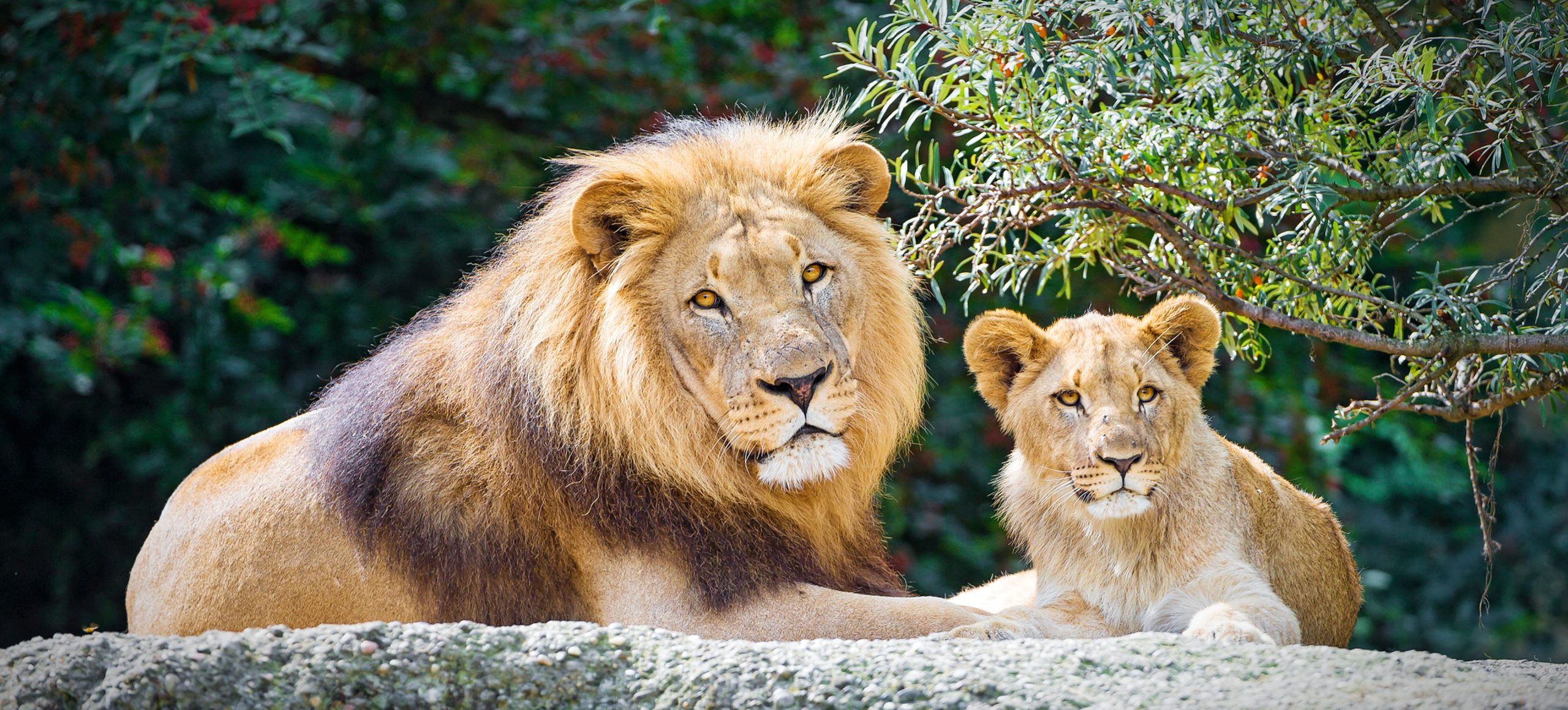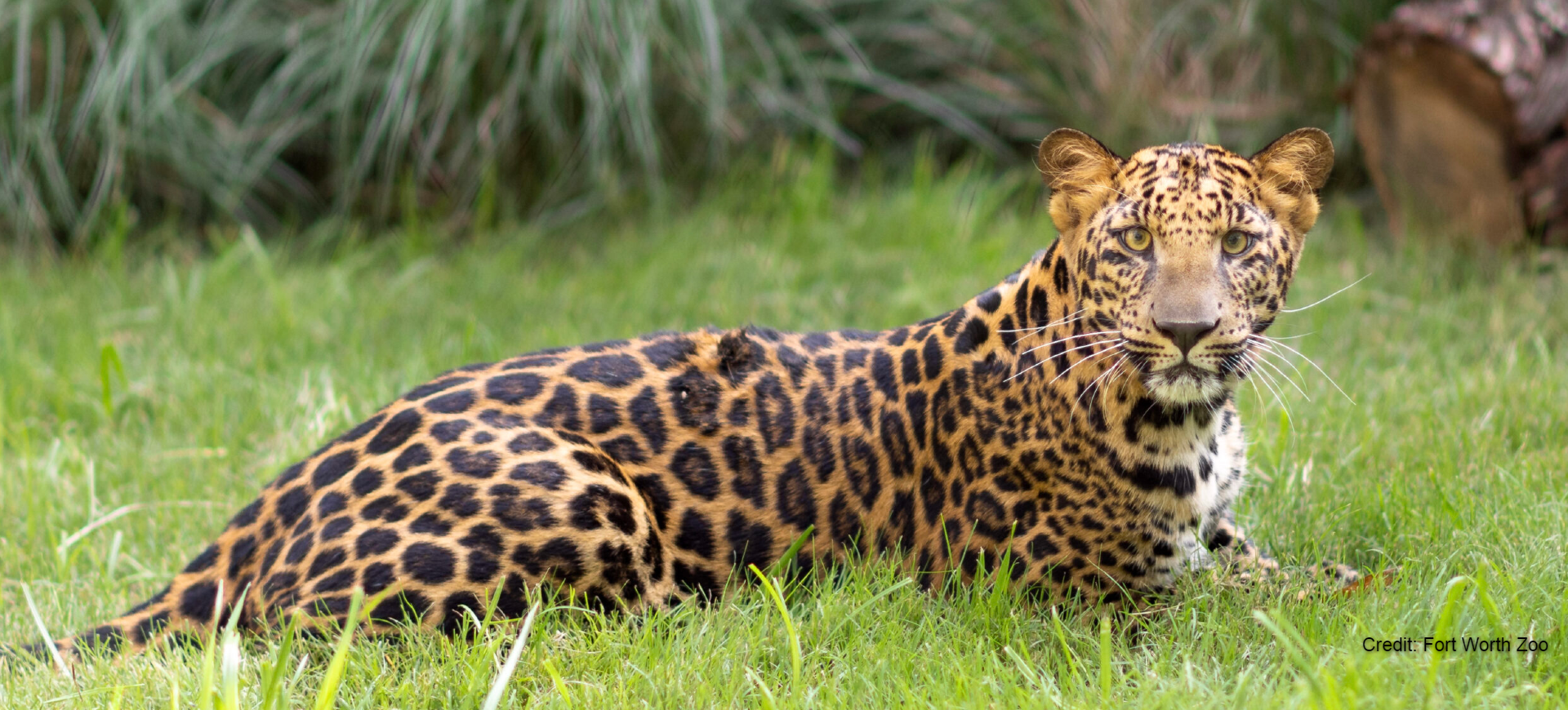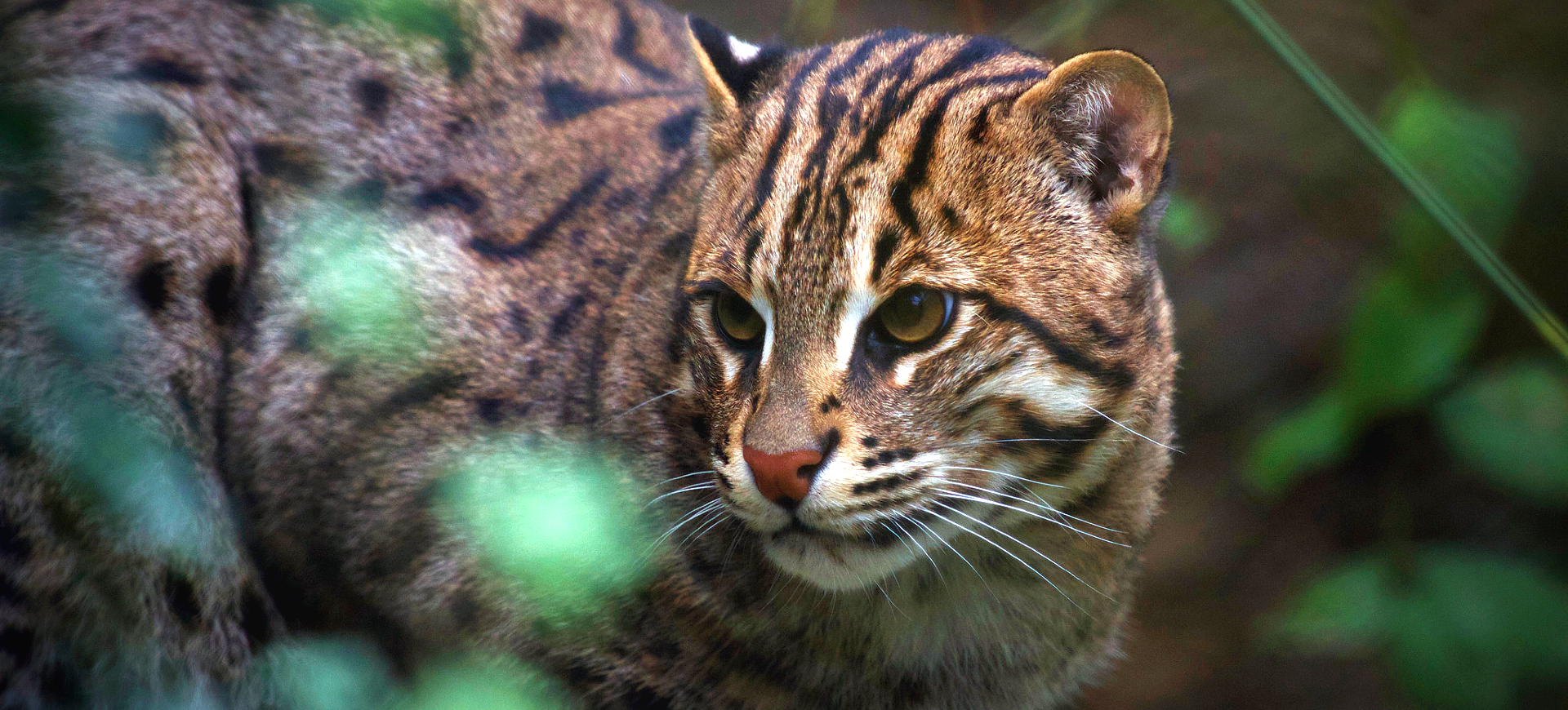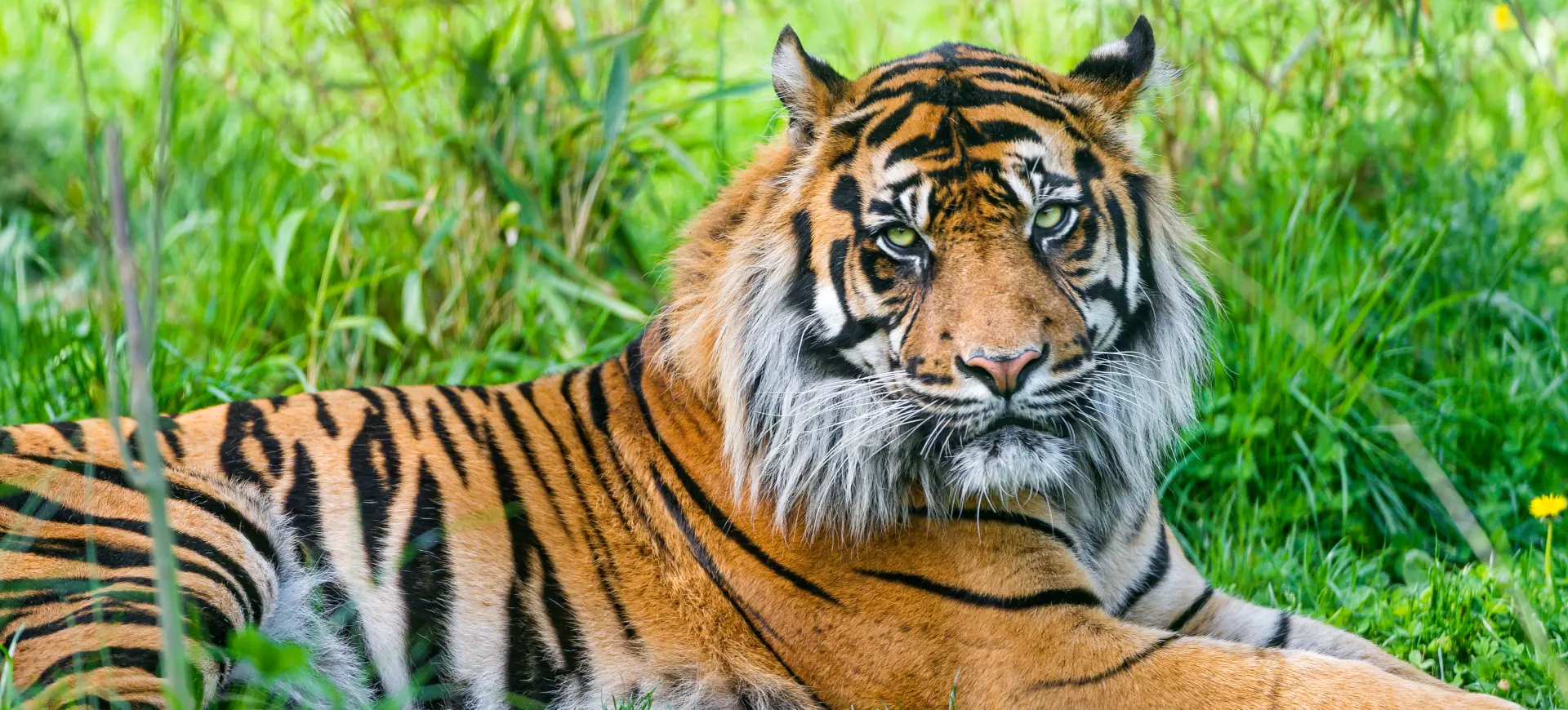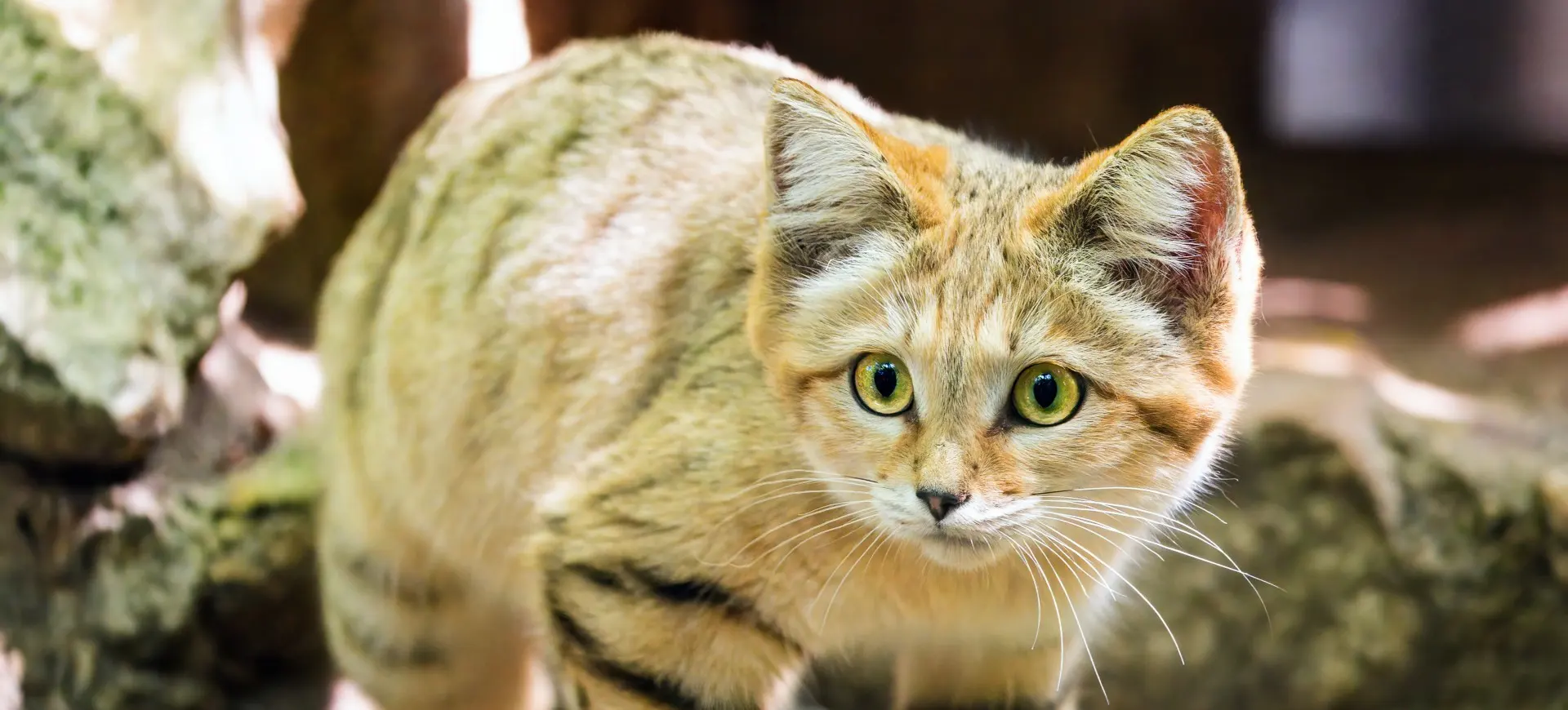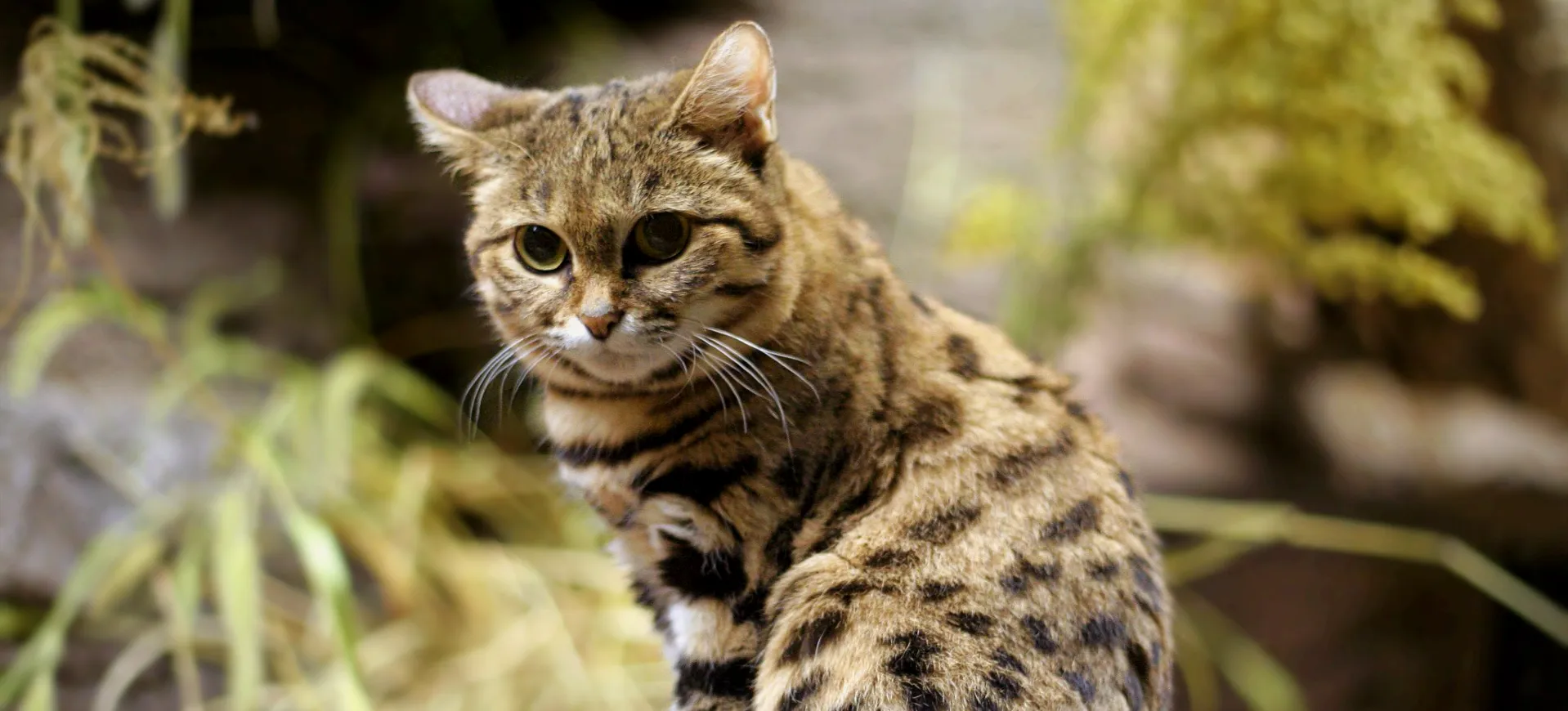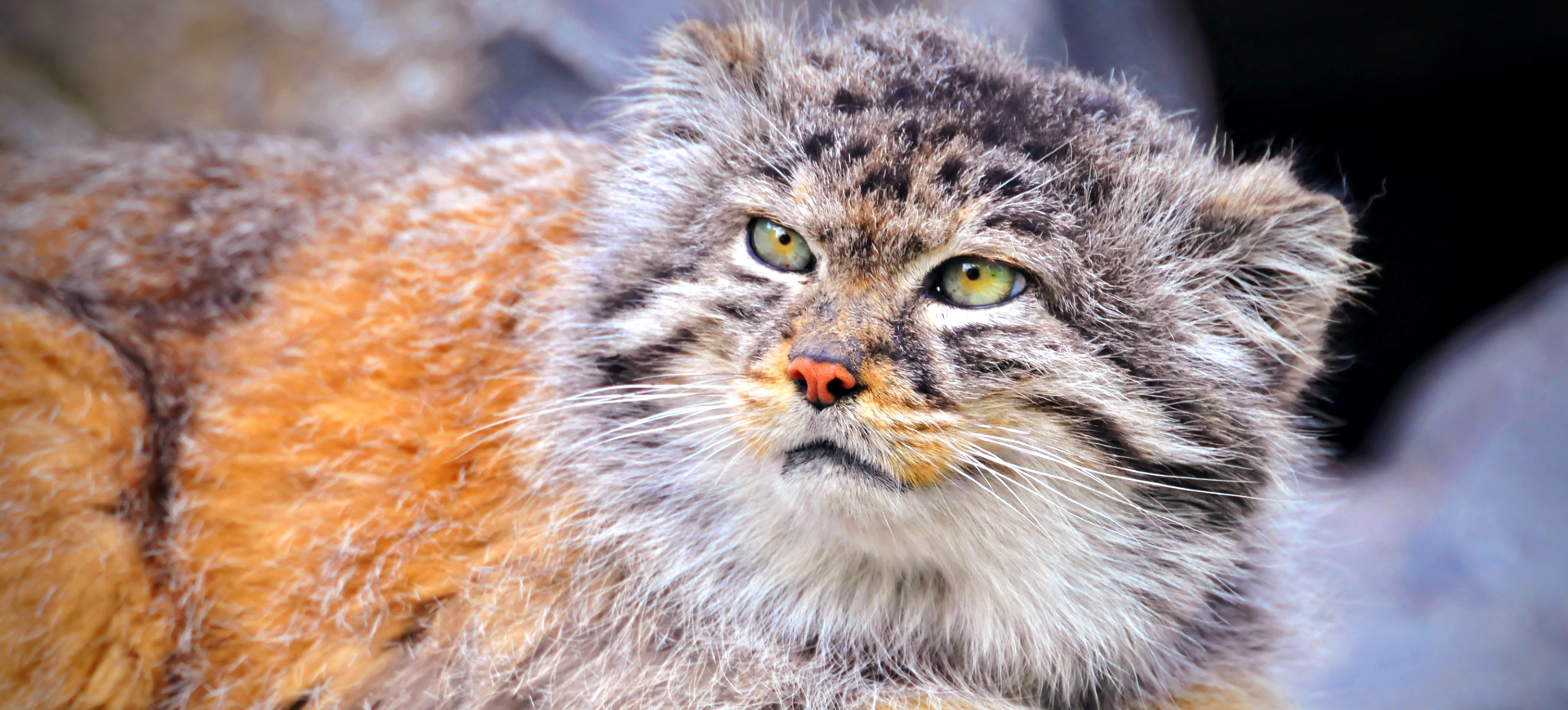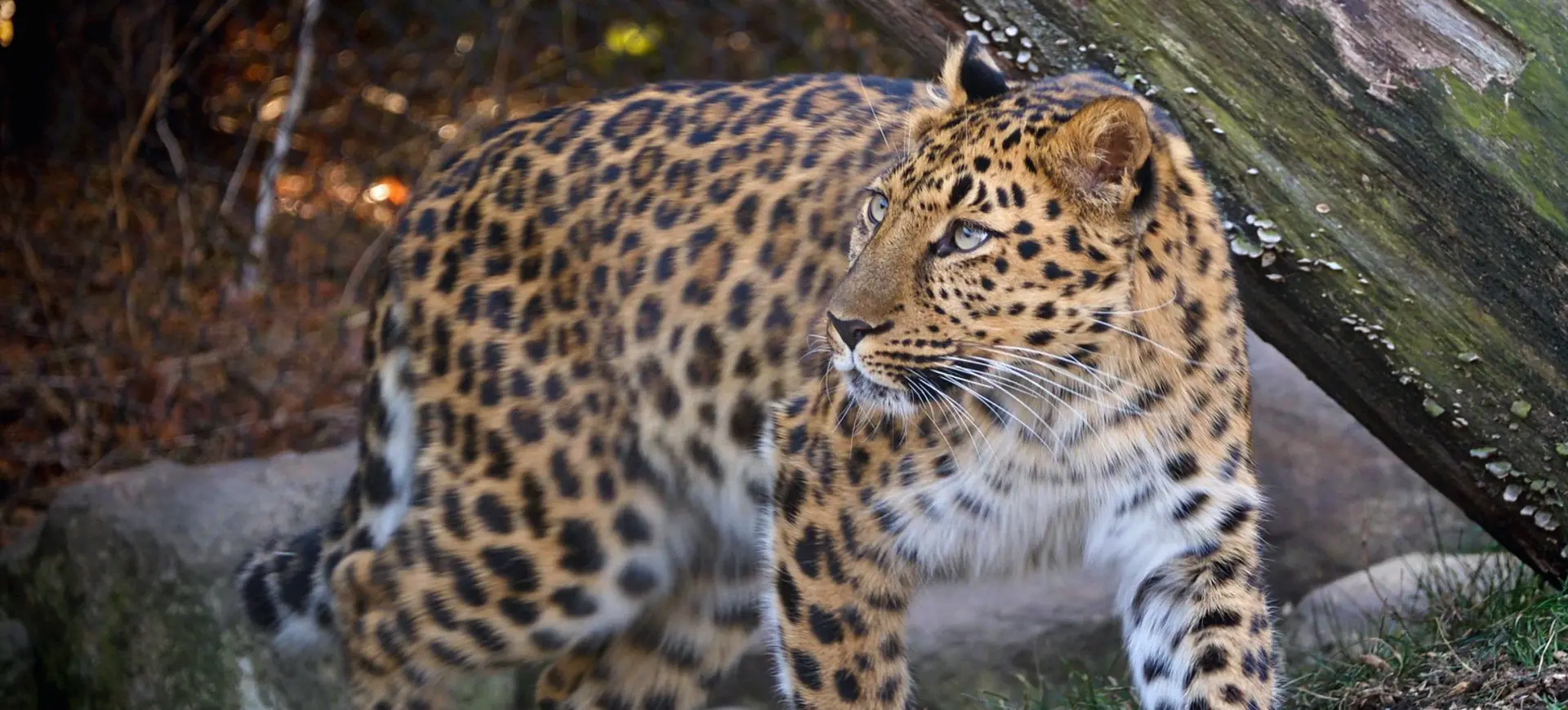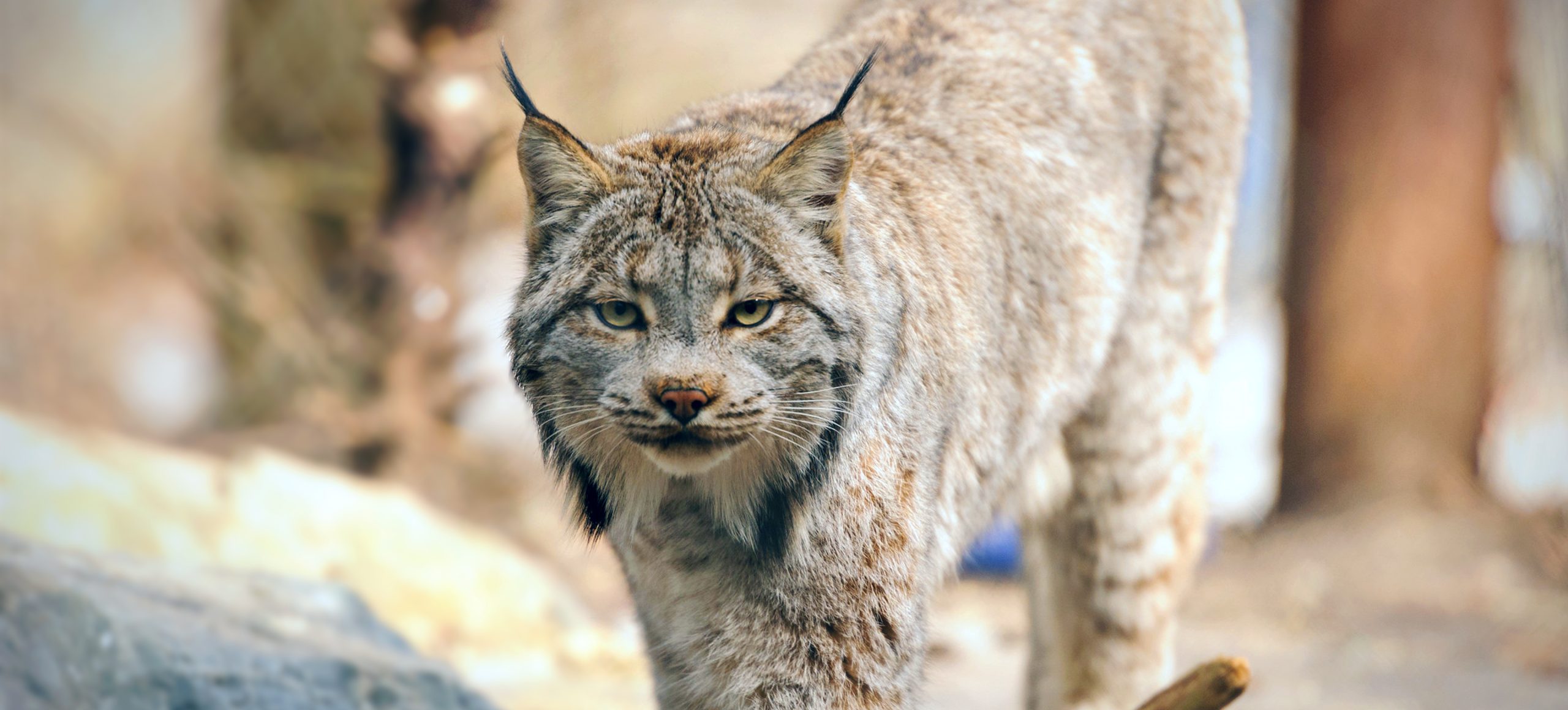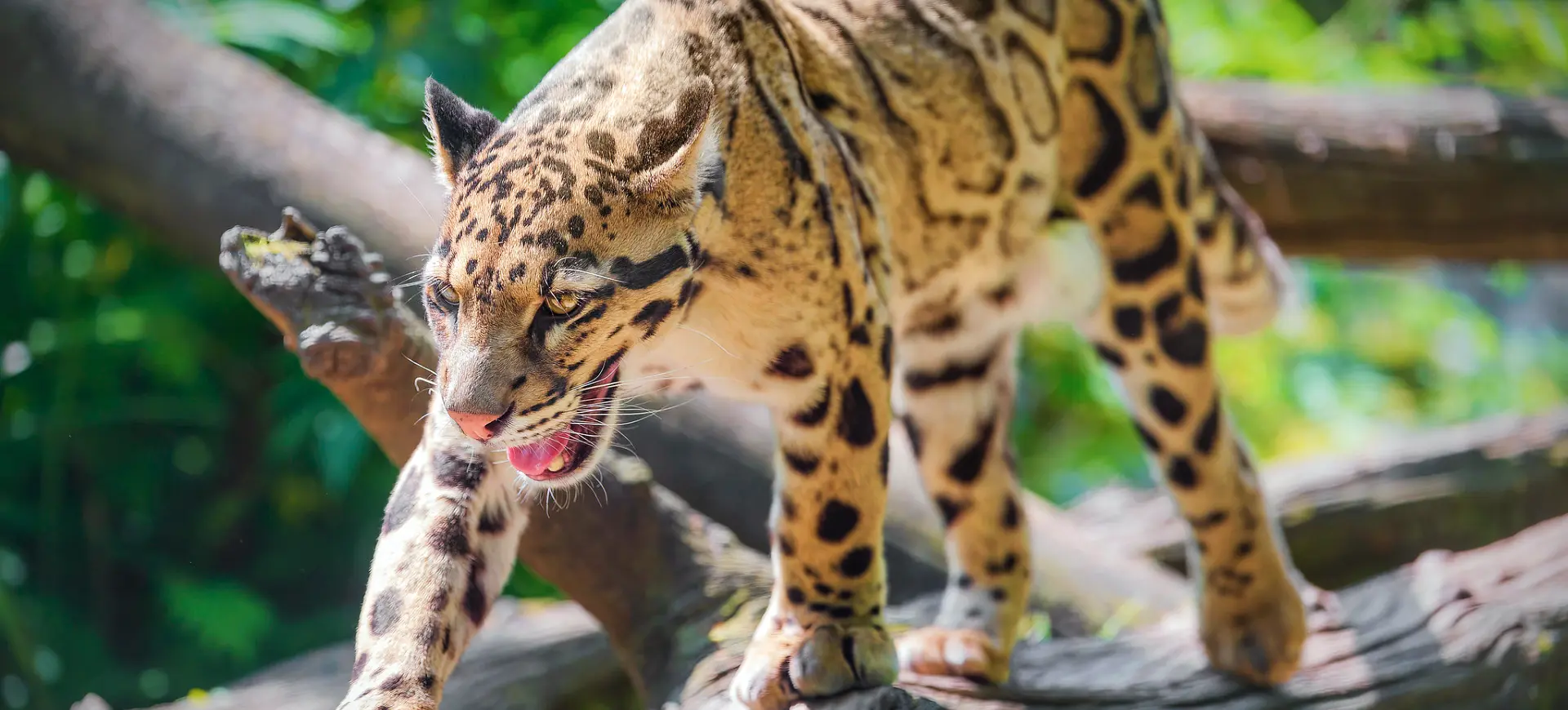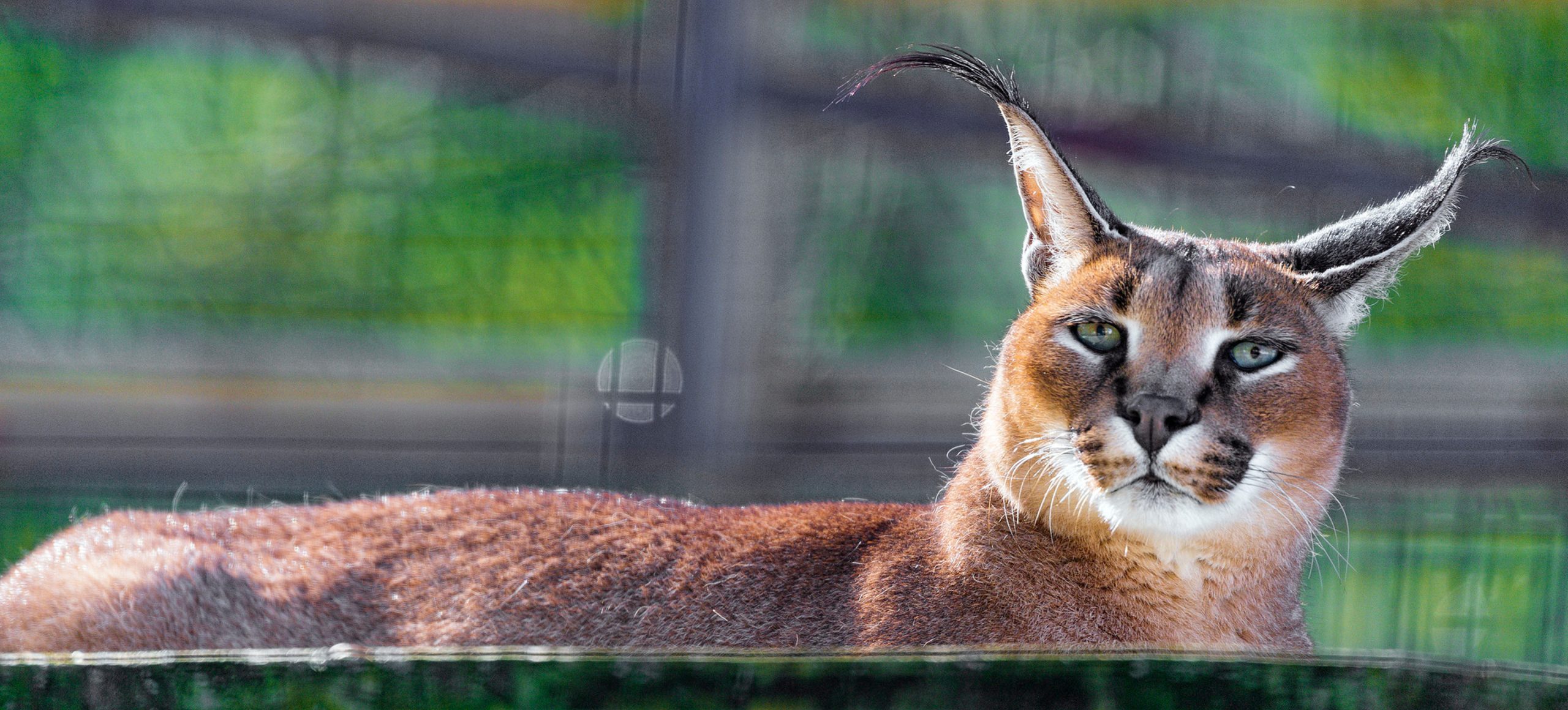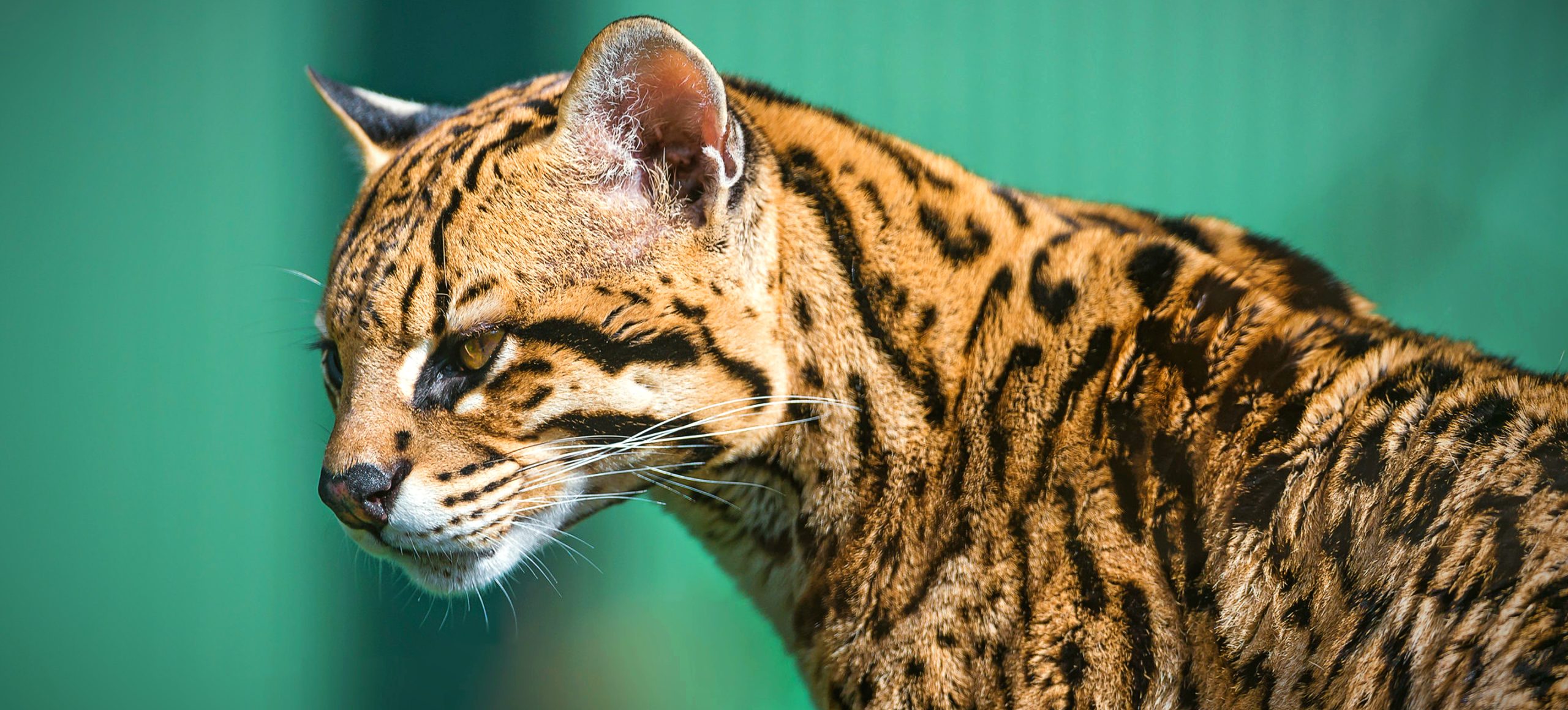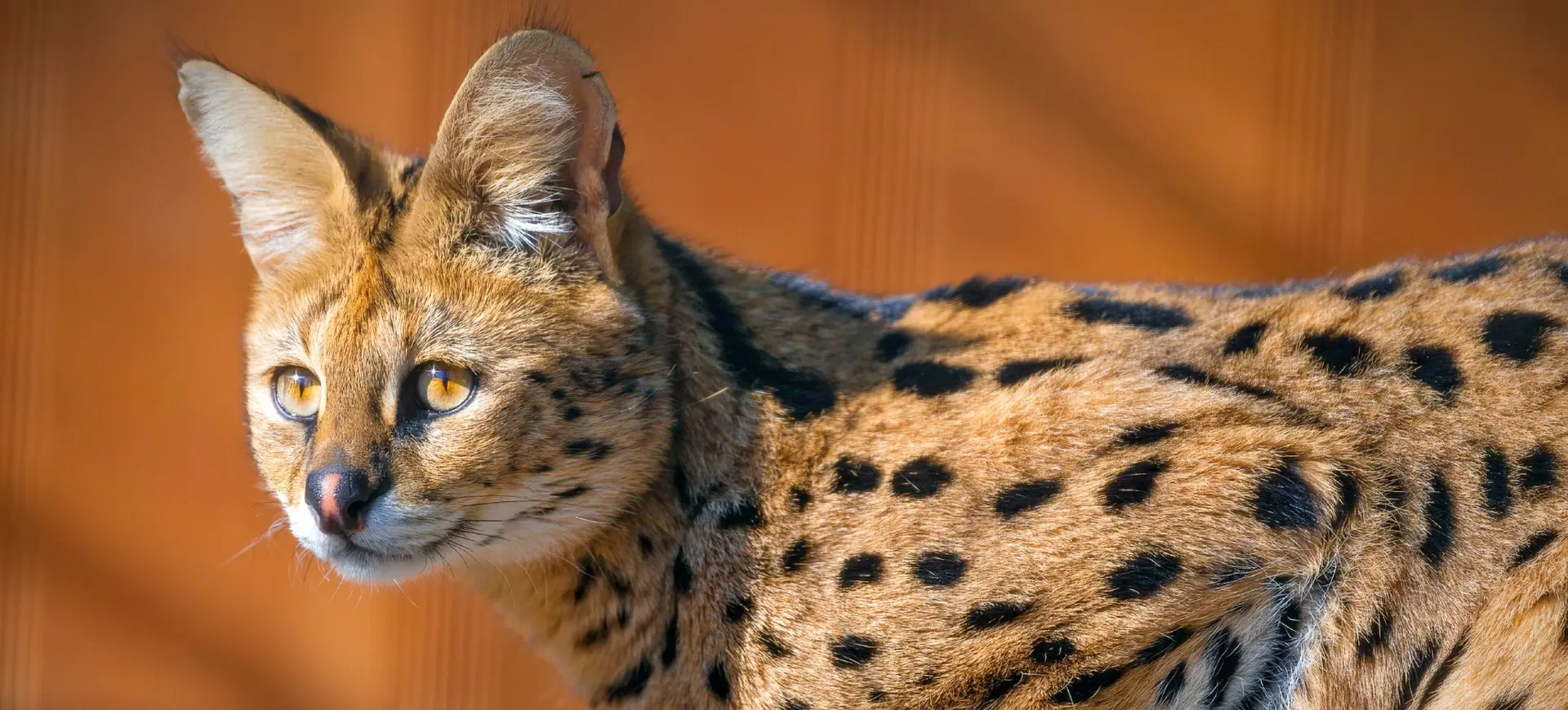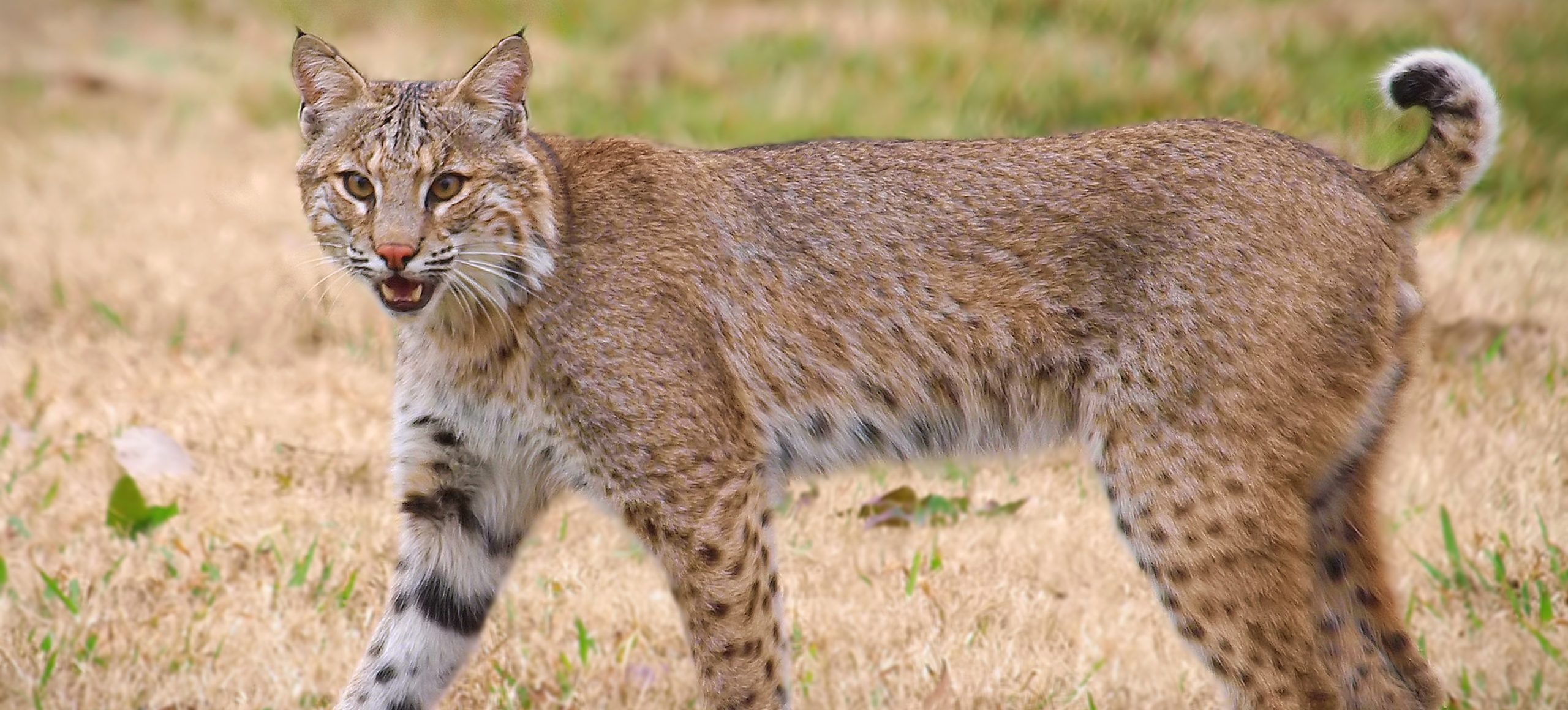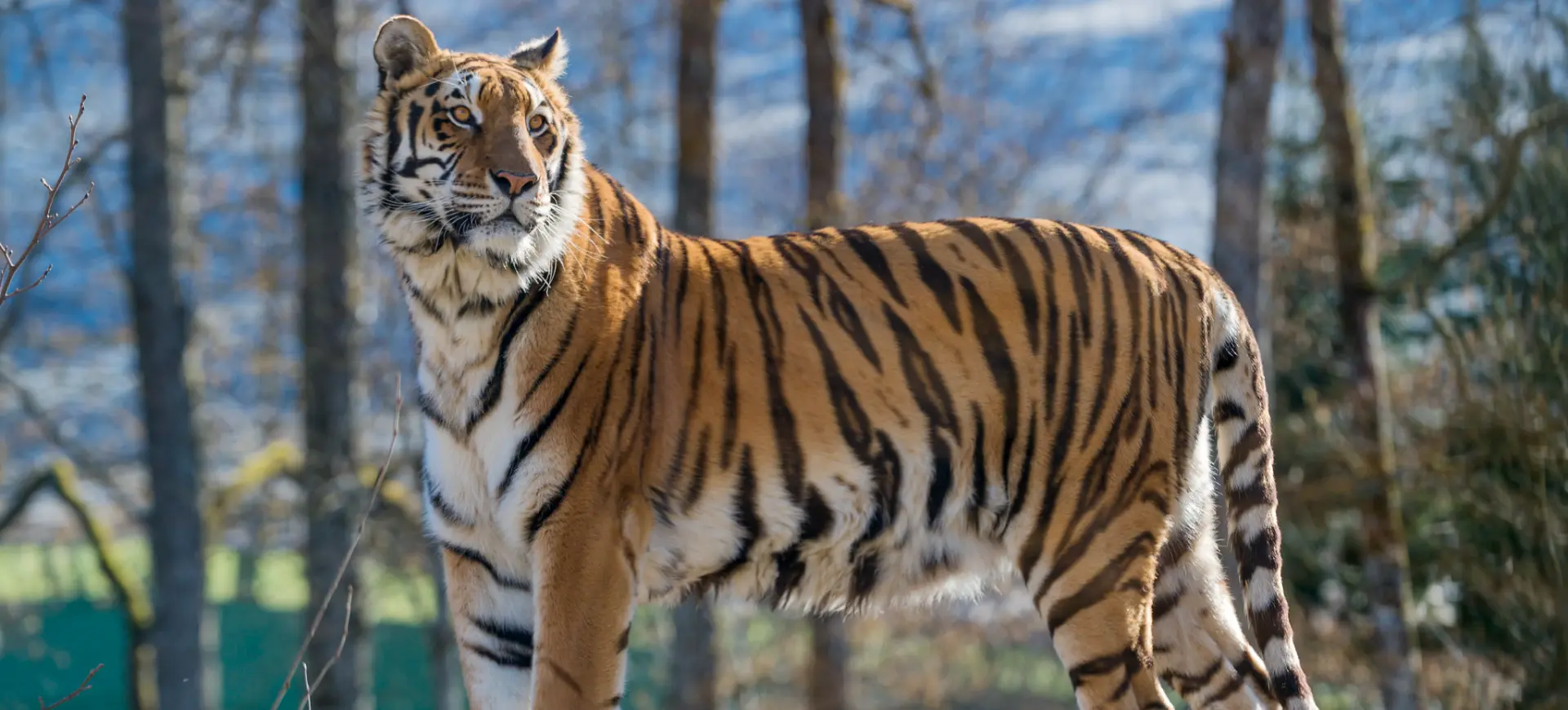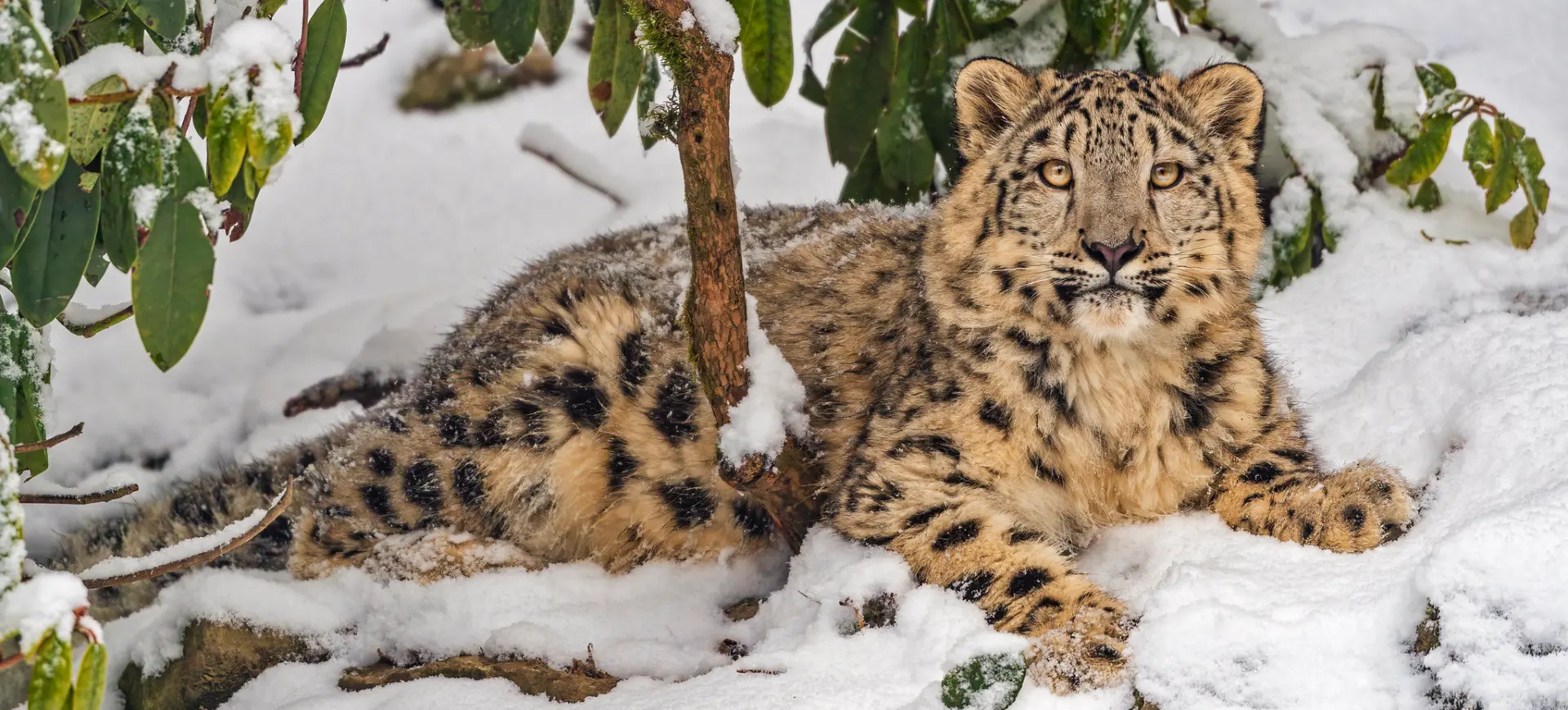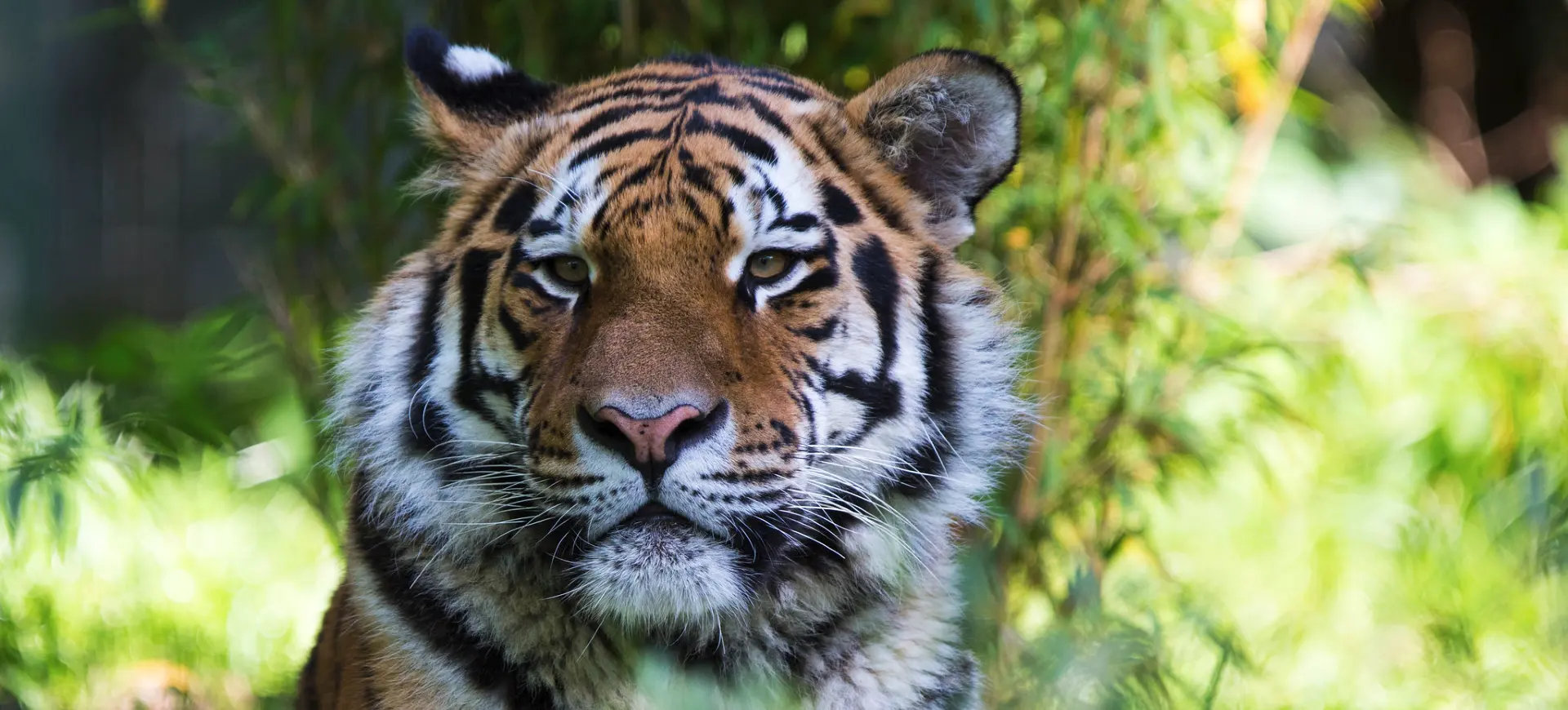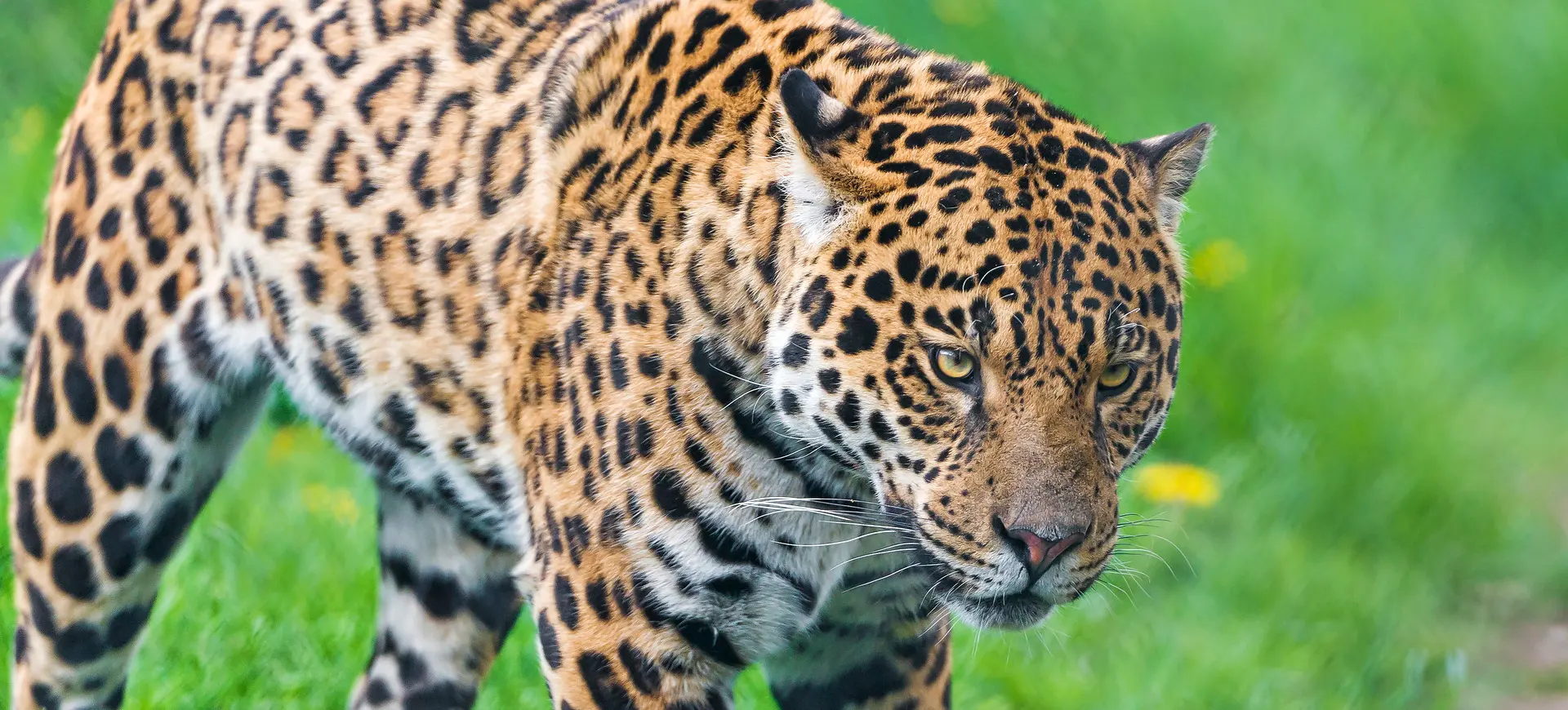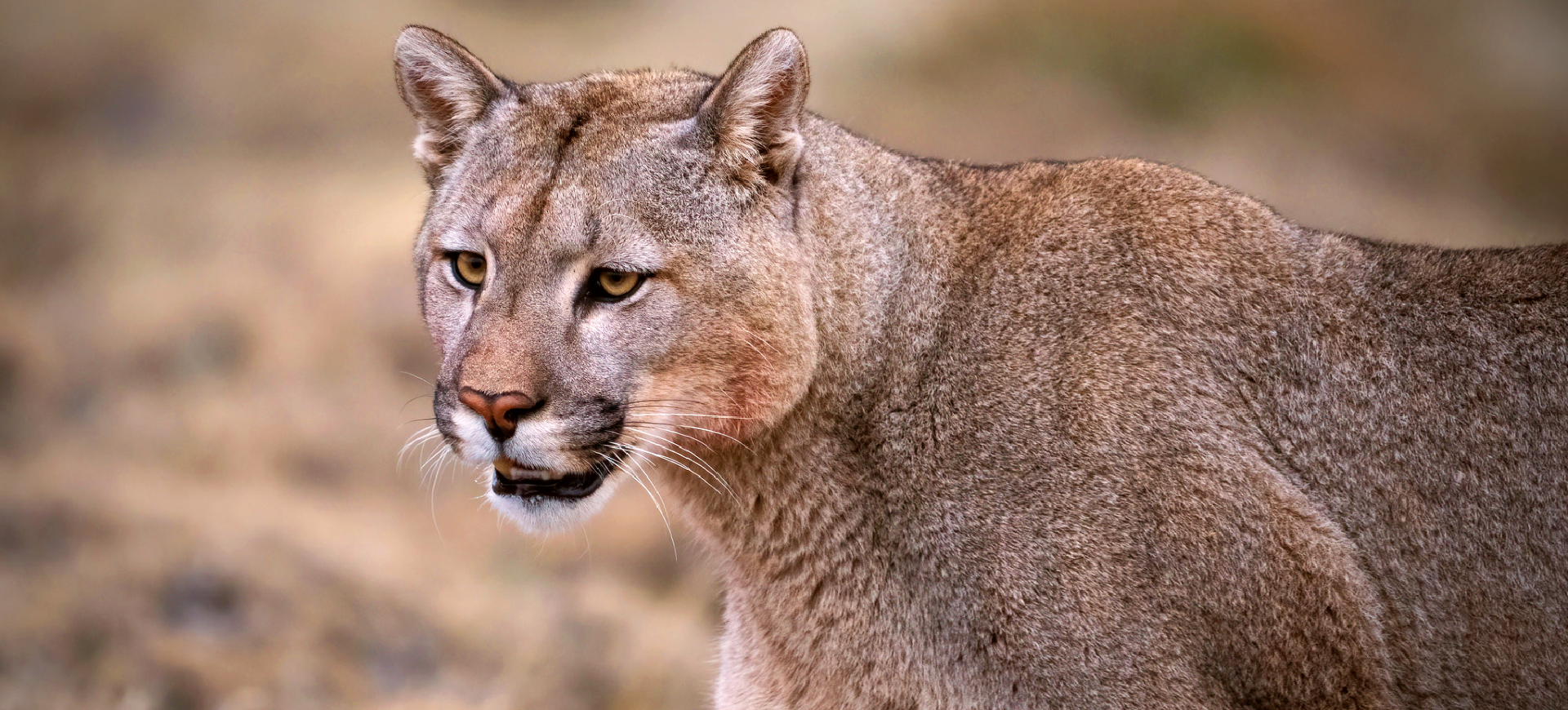Overview
The cheetah (Acinonyx jubatus) is a large, slender cat known for being the fastest land animal, reaching speeds up to 70 mph (113 km/h) in short bursts. Native to parts of Africa and Iran, it thrives in open grasslands and savannas, where its exceptional speed and keen eyesight help it hunt prey. Unlike other big cats, the cheetah relies on speed rather than strength to capture its prey, using a combination of stealth and rapid acceleration. Its lightweight build, deep chest, and long limbs are specialized for high-speed pursuits, making it one of the most unique members of the Felidae family.
Cheetahs are diurnal hunters, primarily active during the early morning and late afternoon to avoid competition with nocturnal predators like lions and hyenas. Their diet consists mainly of small—to medium-sized ungulates such as gazelles, impalas, and young wildebeests, which they stalk before initiating a high-speed chase. Unlike other big cats, cheetahs do not have fully retractable claws, which provide extra traction during sprints. Their distinctive black “tear marks” running from the eyes to the mouth reduce glare and enhance focus while hunting.
Socially, cheetahs exhibit a flexible structure, with males often forming small coalitions, usually of brothers, to increase their hunting success and territorial control. Conversely, females are solitary, except when raising cubs, which they nurture and teach essential survival skills. Cubs have a high mortality rate due to predation from lions, leopards, and hyenas, with only a small percentage reaching adulthood. Despite their adaptability, cheetah populations are declining due to habitat loss, human-wildlife conflict, and a limited genetic pool, making conservation efforts crucial for survival.
Current distribution:
Cheetahs are primarily found in fragmented populations across sub-Saharan Africa, with strongholds in Namibia, Botswana, Kenya, and South Africa. A small, critically endangered population of Asiatic cheetahs survives in Iran, with fewer than 50 individuals remaining. While once widespread, their range has been drastically reduced due to habitat loss, human-wildlife conflict, and declining prey availability. Cheetahs require large territories, making them particularly vulnerable to land conversion for agriculture and livestock grazing.
Conservation programs have established protected areas and wildlife corridors to support remaining populations, but human encroachment threatens survival. In some regions, cheetahs are forced into conflict with farmers, who may kill them to protect livestock. Road development and fencing further fragment habitats, limiting genetic exchange between populations. Conservationists are working on habitat restoration and reintroduction projects to stabilize numbers in key regions.
Physical Description:
The cheetah has a sleek, aerodynamic body designed for speed, with long, slender legs, a deep chest, and a flexible spine that allows for rapid acceleration. Its short, coarse fur is golden-yellow and covered in small, round black spots, providing excellent camouflage in dry grasslands. The head is small with high-set eyes, black tear marks that run from the eyes to the mouth, and short, rounded ears that aid in detecting sounds from potential threats. Unlike other big cats, the cheetah has a relatively small jaw and weak bite force, relying on suffocation rather than brute strength to kill its prey.
Its long, muscular tail, which can grow up to 31 inches (80 cm), acts as a rudder, helping with balance and quick direction changes during chases. The cheetah’s claws are only semi-retractable, giving it additional grip on the ground, much like track spikes used by sprinters. Specialized pads on its feet provide traction, while large nasal passages and lungs allow increased oxygen intake during sprints. Despite its impressive speed, the cheetah lacks endurance and must rest after short chases, making it vulnerable to scavengers that may steal its kill.

Lifespan: Wild: ~12 Years || Captivity: ~20 Years

Weight: Male: 99–145 lbs (45–66 kg) || Female: 77–105 lbs (35–48 kg)

Length: Male: 45–53 in (114–135 cm) || Female: 42–50 in (107–127 cm)

Height: Male: 28–35 in (71–89 cm) || Female: 26–32 in (66–81 cm)

Top Speed: 70 mph (113 km/h)
Characteristic:
Native Habitat:
Cheetahs primarily inhabit open grasslands, savannas, and semi-arid regions where their speed is most effective for hunting. They are most commonly found in sub-Saharan Africa, with the largest populations in Namibia, Botswana, Kenya, and Tanzania. The species also exists in Iran’s arid desert landscapes, though the Asiatic cheetah population is critically endangered. Cheetahs prefer areas with moderate vegetation cover, which allows them to stalk prey while avoiding detection by larger predators.
They rely on territories with abundant prey, low competition, and access to water sources, although they can survive in arid conditions with minimal water intake. Unlike other big cats, they avoid dense forests, which hinder their ability to reach top speeds. Cheetahs are highly adaptable and have been observed in mountainous regions, desert margins, and scrublands. However, habitat fragmentation is a significant challenge, forcing them into smaller, isolated populations with limited resources.
Biomes:
Biogeographical Realms:
Countries:
Diet:
Diet & Feeding Habits:
Cheetahs are obligate carnivores that hunt small to medium-sized ungulates such as gazelles, impalas, springboks, and young wildebeests. They rely on stealth and speed to get within striking distance before launching an explosive chase that lasts no more than 30 seconds. Once the prey is caught, the cheetah suffocates it by biting the throat, ensuring a quick kill before larger predators arrive. Unlike lions and hyenas, cheetahs do not scavenge and rarely defend their kills, often losing them to stronger competitors.
When larger ungulates are scarce, their diet is supplemented with smaller prey such as hares, ground birds, and warthog piglets. Cheetahs consume their food quickly to avoid confrontation with other predators, eating as much as possible before abandoning the carcass. Due to their high-energy lifestyle, they require frequent meals but can go several days without food if necessary. Water is primarily obtained from prey, though cheetahs will drink from available water sources when needed.
Mating Behavior:
Mating Description:
Cheetahs have a polygynous mating system, with males competing to access receptive females. Unlike lions, males do not establish harems, and females mate with multiple males throughout their lifetime. Mating can occur year-round, but peak seasons coincide with periods of prey abundance. After a gestation period of about 90–95 days, females give birth to a litter of three to five cubs in a secluded den.
Cubs are born blind and helpless, with a thick grayish mane that helps camouflage them from predators. Mothers provide all parental care, moving cubs to new dens frequently to avoid detection by lions and hyenas. Cubs stay with their mother for about 18 months before becoming independent, with siblings sometimes forming temporary coalitions. Due to high predation rates, fewer than 30% of cubs survive to adulthood.
Reproduction Season:
Birth Type:
Pregnancy Duration:
Female Name:
Male Name:
Baby Name:
Social Structure Description:
Cheetahs have a unique social structure compared to other big cats, with males often forming coalitions while females remain solitary. Male coalitions, typically composed of brothers from the same litter, work together to defend territories and increase mating opportunities. These coalitions are highly territorial, marking their range with scent markings and vocalizations. Solitary males, in contrast, have difficulty holding territories and have lower reproductive success.
Females are solitary and have overlapping home ranges that are not actively defended. They move frequently, especially when raising cubs, to avoid attracting predators. Mothers invest significant time in teaching cubs survival skills, such as stalking and hunting techniques. Once cubs reach independence, they often stay together as a sibling group for several months before dispersing.
Groups:
Conservation Status:
Population Trend:
The global cheetah population has significantly declined due to habitat fragmentation, human-wildlife conflict, and declining prey availability. Once widespread across Africa, the Middle East, and parts of Asia, cheetahs now exist primarily in small, isolated populations within protected areas. The largest populations are found in Namibia, Botswana, and parts of East Africa, but even these are under constant pressure from habitat loss. The Asiatic cheetah, found only in Iran, is critically endangered, with fewer than 50 individuals remaining.
Despite conservation efforts, wild cheetahs face challenges such as reduced genetic diversity and competition with larger predators, limiting their long-term survival prospects. Some subpopulations, especially those outside national parks, are declining more rapidly due to increasing human settlements and agricultural expansion. Cheetah conservation programs focus on habitat protection, anti-poaching measures, and initiatives to reduce conflict with farmers. Without increased conservation efforts, the species may continue to decline, particularly in areas where human activity is expanding rapidly.
Population Threats:
Habitat loss and fragmentation are the most significant threats to cheetah populations, as expanding agriculture and human settlements reduce the open landscapes they require for hunting. Roads, fences, and urban development further isolate populations, limiting genetic exchange and reducing available prey. Human-wildlife conflict is another major issue, with cheetahs often being killed by farmers who see them as a threat to livestock. While cheetahs are not the primary predators of livestock, they are frequently blamed and persecuted due to their vulnerability compared to lions and leopards.
Illegal wildlife trade also impacts cheetahs, particularly in parts of Africa where cubs are captured for the exotic pet market. Many of these cubs die in transit, and those that survive often suffer from poor conditions in captivity. Competition with larger carnivores, such as lions and hyenas, further reduces their survival rates, as cheetahs often lose their kills to scavengers. Climate change poses an additional long-term threat by altering prey availability and increasing drought conditions in certain regions.
Conservation Efforts:
Several conservation organizations and governments are working to protect cheetahs through habitat preservation, anti-poaching initiatives, and community engagement programs. National parks and wildlife reserves provide essential, safe zones for cheetahs, but additional efforts focus on establishing corridors that connect fragmented populations. Organizations like the Cheetah Conservation Fund (CCF) work with local communities to promote coexistence through education and livestock protection programs. These include guard dogs to reduce livestock predation and compensation programs to discourage retaliatory killings.
Captive breeding programs in zoos and wildlife reserves help maintain genetic diversity and raise awareness about cheetah conservation. Some reintroduction projects aim to restore cheetahs to areas where they have disappeared, though habitat constraints and human conflict often limit success. Efforts are also being made to combat the illegal pet trade by strengthening laws against wildlife trafficking and rescuing confiscated cheetah cubs. Continued research and monitoring programs are critical to understanding population trends and implementing effective conservation strategies.
Additional Resources:
Fun Facts
- The cheetah is the fastest land animal, capable of reaching speeds up to 70 mph in short bursts covering distances up to 500 meters.
- Cheetahs use their tail for balance and steering when running at high speed.
- Unlike other big cats, cheetahs cannot roar. Instead, they purr.
- Cheetah cubs have a mantle of long, loose hair that runs down their back, which gives them a mohawk-like appearance. This mantle is thought to mimic the appearance of the fierce honey badger, warding off potential predators.
- Cheetahs have between 2,000 and 3,000 spots, which helps them to camouflage themselves.
- They have a high-speed hunting strategy, using their incredible speed to chase and capture prey.
- The cheetah’s ‘tear marks’ help to reflect the sun’s glare and enable them to focus better on their prey.
- Their acceleration is even more impressive than their top speed – they can go from 0 to 60 mph in just a few seconds.
- Cheetahs have a unique, semi-retractable claw (almost like that of a dog) compared to other cats. It gives them a good grip on the ground while running at a high speed.
- Female cheetahs are solitary animals whose home ranges can be vast, covering hundreds of square miles.


